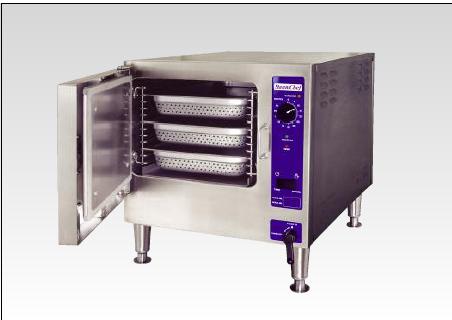Project Info
COMPLETE
 Project Title
Project Title
 Project Title
Project Title
Steamers for Food Service Applications
Project Number ET10SCE1390 Organization SCE End-use Process Loads Sector Commercial Project Year(s) 2010 - 2011Description
Steamers, or steam cookers, are cooking appliances wherein heat is imparted to food in a closed compartment by direct contact with steam. The compartment can be at or above atmospheric pressure. The steam can be static or circulated. The purpose of this test is to use ASTM standard test methods to evaluate the cooking energy performance of several commercially available steamers in order to populate a database to determine the list of qualifying equipment for workpaper development.
Project Report Document
Loading PDF Preview...
